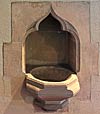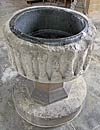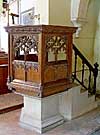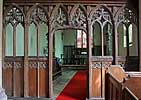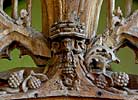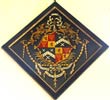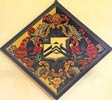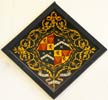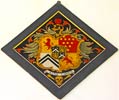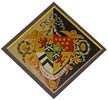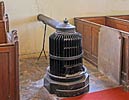For this church:    |
Staunton St MaryFeatures and FittingsChancel
NaveFont
The font dates from the 12th century and is ornamented with interlaced arcading. It has a modern octagonal base and the circular step is made from a 15th century cross slab still bearing a partial inscription. Gill suggests that this formed part of the cross slab of Thomas Staunton, son of Radulphus, who died in April 1446. Pulpit
The traceried four-sided oak pulpit has a stone base and dates from 1912. LecternThe brass eagle lectern also dates from 1912. Chancel screenThe traceried chancel screen is made from sections of a fine early 16th century rood screen which no longer has its rood loft. Parts of a raised black-letter inscription survive. The transcription below was made by Robert Staunton in the late 16th century when the screen was still intact:
Poor box
HatchmentsThere are five funeral hatchments of the Staunton family in the nave: three are along the south wall of the nave and two are on the nave wall at the east end of the north arcade.
Stove heater
North Aisle
|


